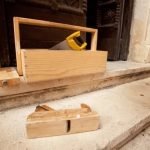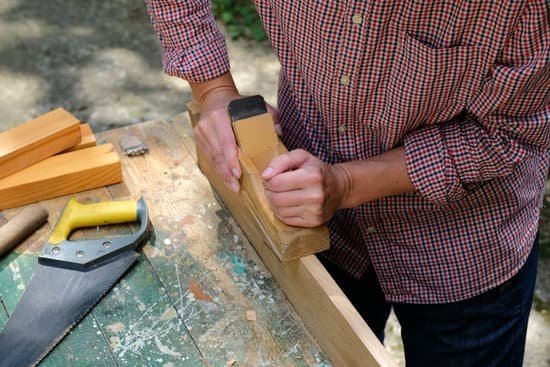Have you ever wondered if using Endust on your wood furniture is safe? In this article, we will explore the safety and benefits of using Endust for woodwork maintenance. We will examine the ingredients of Endust, its common uses, and whether or not it is a safe option for preserving the beauty of your wooden surfaces.
Endust is a popular multi-surface dusting and cleaning spray that has been trusted by homeowners for decades. It is known for effectively removing dust, fingerprints, and smudges from various surfaces. However, when it comes to woodwork, many people are hesitant about using this product due to concerns about its safety and potential risks.
When considering the use of Endust on woodwork, it is important to understand its ingredients and how they may impact the appearance and longevity of your wooden surfaces. Additionally, exploring alternative options for wood maintenance can aid in making an informed decision about the best products to use for caring for your wood furniture.
What Is Endust?
Understanding Endust
Endust is a popular brand of cleaning and dusting spray that is commonly used in households and commercial settings. It is designed to effectively remove dust, dirt, and other particles from various surfaces, leaving them clean and shiny. Endust comes in different formulations such as aerosol sprays, pump sprays, and wipes, making it convenient for users to choose the one that best suits their needs.
The Purpose of Endust
The main purpose of Endust is to provide an efficient and convenient way to clean and maintain different surfaces in homes or workplaces. It is specially formulated to attract and hold onto dust particles while also providing a level of protection against future dust buildup. Endust can be used on a wide range of surfaces including woodwork, furniture, electronics, glass, countertops, and more.
Is Endust Safe for Woodwork?
One question that many people have when considering using Endust on woodwork is whether it is safe for this particular surface. The good news is that Endust offers a specific formulation that is suitable for woodwork maintenance.
When used according to the manufacturer’s instructions, this product can effectively clean and protect wood surfaces without causing any harm. However, it’s important to be aware of the potential risks and benefits associated with using Endust on woodwork to make an informed decision about its suitability for your specific needs.
The Ingredients of Endust
Endust is a popular household cleaning product used for dusting and cleaning various surfaces. It is a versatile cleaner that can be used on furniture, countertops, blinds, and more. However, in the context of woodwork maintenance, it is important to understand the ingredients of Endust and whether or not it is safe to use on wood surfaces.
The ingredients of Endust include water, propane, butane, mineral oil, dimethicone, fragrance, and surfactants. These ingredients work together to attract and remove dust while leaving a shiny finish on surfaces. However, when it comes to using Endust on woodwork, the presence of mineral oil and dimethicone raises questions about its safety for wood surfaces.
When considering whether Endust is safe for woodwork, it is important to note that mineral oil can leave a residue on wood surfaces and cause buildup over time. Additionally, dimethicone can create a glossy finish on wood which some individuals may find undesirable. As a result, it is recommended to exercise caution when using Endust on woodwork and consider alternative products specifically designed for wood maintenance.
In summary, while Endust is effective for general dusting and cleaning purposes in the household, its use on woodwork may pose some risks due to the presence of certain ingredients like mineral oil and dimethicone. Careful consideration should be given when using this product on wood surfaces to avoid potential long-term damage or undesirable effects.
Common Uses of Endust
Endust is a versatile cleaning product that can be used for a variety of household surfaces, not just woodwork. Here are some common uses of Endust:
1. Wood Furniture: Endust is commonly used to clean and polish wood furniture, leaving behind a shiny finish without any waxy buildup.
2. Stainless Steel Appliances: Endust can effectively remove fingerprints, smudges, and other marks from stainless steel appliances, giving them a clean and polished look.
3. Glass Surfaces: Endust can be used on glass tables, mirrors, and windows to remove dust, dirt, and smudges without leaving streaks or residue.
Overall, Endust is an all-purpose cleaning product that can be used on a variety of surfaces in your home to keep them looking clean and polished.
Some people may wonder if Endust is safe for woodwork maintenance. The answer is yes, Endust is safe for woodwork when used properly. It contains gentle cleaning agents that effectively remove dust and dirt without damaging the wood surface. When used according to the manufacturer’s instructions, Endust can help maintain the beauty of your woodwork while protecting it from dust and other contaminants.
In order to ensure the safety of using Endust on woodwork, it’s important to follow these proper usage guidelines:
By following these guidelines, you can safely use Endust on your woodwork without causing any damage.
Is Endust Safe for Woodwork?
Endust is a popular household cleaning product that many people use to keep their woodwork looking clean and polished. But, is Endust safe for woodwork? Let’s take a closer look at how Endust impacts various types of woodwork and explore the potential benefits and risks of using this product.
Understanding the Safeness of Endust for Woodwork
When it comes to determining whether Endust is safe for woodwork, it’s essential to consider the ingredients found in this product. Understanding what makes up Endust can help you make an informed decision about using it on your wood surfaces.
The Ingredients in Endust
One of the key considerations when assessing the safety of using Endust on woodwork is examining the ingredients of this cleaning product. By understanding the components found in Endust, you can better determine its suitability for your specific type of woodwork.
Potential Risks of Using Endust on Woodwork
While many people rely on Endust to maintain their wood surfaces, there are potential risks associated with using this product. It’s crucial to be aware of any drawbacks or adverse effects that may occur from using Endust on your woodwork.
Benefits of Using Endust on Woodwork
Endust is a popular cleaning product that has been used for decades to clean and maintain various surfaces in homes and offices. When it comes to woodwork, Endust offers several benefits that make it a preferred choice for many homeowners and professional cleaners.
Here are some of the key benefits of using Endust on woodwork:
- Effective dust removal: Endust is specially formulated to attract and capture dust, making it an effective way to keep wood surfaces clean and free from dust buildup.
- Enhanced shine: Endust contains ingredients that not only clean but also add a shine to wood surfaces, leaving them looking polished and well-maintained.
- Protective properties: When used as directed, Endust can help protect woodwork from everyday wear and tear, prolonging the life of the finish and keeping the surface looking new.
In addition to these benefits, many users find that using Endust on their woodwork saves time and effort compared to other cleaning methods. Its convenient spray format allows for quick application, making it an ideal choice for regular maintenance.
It’s important to note that while there are benefits to using Endust on woodwork, proper usage is essential to avoid any potential risks or damage to the surface. Following the manufacturer’s instructions for application is crucial in ensuring the best results while preserving the integrity of the woodwork.
Potential Risks of Using Endust on Woodwork
Endust is a popular cleaning product that is commonly used on various surfaces including woodwork. However, it is important to consider the potential risks of using Endust on woodwork. One potential risk is that over time, the use of Endust can cause a buildup of residue on wood surfaces, which can lead to discoloration and a dull appearance. This residue can be difficult to remove and may require more aggressive cleaning methods in the future.
Another potential risk of using Endust on woodwork is the possibility of causing damage to the finish or surface of the wood. Some wood finishes are sensitive to certain chemicals and ingredients found in cleaning products like Endust, which could result in damage such as fading, peeling, or warping of the wood. It is important to carefully read and understand the ingredients in Endust to determine if they are safe for use on your specific type of woodwork.
In addition, using too much Endust or applying it incorrectly can also result in an uneven or streaky appearance on wood surfaces. This can detract from the overall aesthetic and quality of the woodwork. It is important to follow proper guidelines and recommendations for using Endust on wood surfaces to avoid these potential risks.
| Potential Risks | Using Endust on Woodwork |
|---|---|
| Residue Buildup | Can lead to discoloration and dull appearance |
| Damage to Finish | Fading, peeling, or warping |
| Uneven Application | Inconsistent appearance |
Alternatives to Endust for Woodwork Maintenance
When it comes to maintaining the cleanliness and luster of woodwork, there are several alternatives to using Endust. One popular alternative is using a homemade wood polish made from natural ingredients such as olive oil and white vinegar.
This mixture not only effectively cleans and polishes wood surfaces but also helps to nourish the wood, keeping it looking its best. Another alternative is using microfiber cloths or dusting mitts to gently remove dust and dirt from wood surfaces without the need for additional cleaning products.
Additionally, some individuals prefer to use commercially available wood cleaners that are specifically formulated for wood surfaces. These cleaners are designed to effectively remove dirt and grime while also nourishing and protecting the wood. They come in spray or liquid form and can be applied directly to the surface or onto a cloth for wiping down.
For those who prefer a more traditional approach, simply using a damp cloth followed by a dry cloth can effectively clean and maintain woodwork without the need for any cleaning products at all. This method removes dust and particles while also preventing potential buildup of cleaning product residue on the surface of the wood.
Ultimately, when considering alternatives to Endust for woodwork maintenance, it’s important to choose methods that not only clean but also protect and preserve the natural beauty of the wood while ensuring safety for both the user and the environment.
How to Properly Use Endust on Woodwork
To properly use Endust on woodwork, it is important to follow the recommended instructions for best results and to ensure the safety of both the wood and the individual using the product. Begin by preparing the area by removing any dust or debris with a soft, dry cloth. It is important to ensure that the surface is clean before applying Endust.
Next, shake the can of Endust well before using it. Hold the can approximately 8 inches away from the surface of the woodwork and spray lightly and evenly. It is important not to saturate the wood with too much product as this can lead to buildup and potential damage over time. After applying, use a clean, dry cloth to gently buff the woodwork, ensuring an even application and a polished finish.
It is also recommended to test a small, inconspicuous area of the woodwork before applying Endust to ensure compatibility and no adverse reactions. Additionally, always read and follow the manufacturer’s instructions on the label of the product for proper usage guidelines. By following these steps, individuals can effectively use Endust on their woodwork while maintaining its original beauty without causing harm or damage.
Conclusion
In conclusion, when it comes to the question “Is Endust Safe for Woodwork?” the answer is generally yes. Endust is specifically formulated to be safe and effective for use on wood surfaces, making it a popular choice for cleaning and maintaining wood furniture, cabinets, and other woodwork in the home. The ingredients in Endust are designed to gently clean and condition wood surfaces without causing any damage or harm.
Using Endust on woodwork has several benefits. Not only does it effectively remove dust, dirt, and grime from wood surfaces, but it also helps to condition the wood, leaving it looking shiny and well-maintained. Additionally, the convenient spray application makes it easy to use on a variety of wood surfaces throughout the home.
While there are some potential risks associated with using Endust on woodwork, such as buildup over time or potential reactions for individuals with sensitivities to certain ingredients, these can largely be mitigated by following proper usage instructions and considering alternatives if necessary. Ultimately, making an informed decision about using Endust on woodwork involves understanding its benefits and potential risks, as well as considering alternative products that may better suit your needs.
Frequently Asked Questions
How Do You Clean a Plain Wood Surface?
To clean a plain wood surface, start by removing any dust and debris with a soft, dry cloth or duster. Then, use a damp cloth with water or wood cleaning solution to gently wipe down the surface, making sure not to oversaturate the wood. Always dry the surface immediately after cleaning to prevent any moisture damage.
Does Endust Leave a Residue?
Endust should not leave a residue if used according to the manufacturer’s instructions. It is important to use the appropriate amount of product and thoroughly wipe down the surface to ensure that no residue is left behind.
Is Pledge Bad for Wood?
Pledge is considered safe for most wood surfaces when used properly and according to the label instructions. However, it is important to test Pledge on a small, inconspicuous area before using it on the entire surface to ensure compatibility and avoid any potential damage.

Hi everyone! I’m a woodworker and blogger, and this is my woodworking blog. In my blog, I share tips and tricks for woodworkers of all skill levels, as well as project ideas that you can try yourself.





